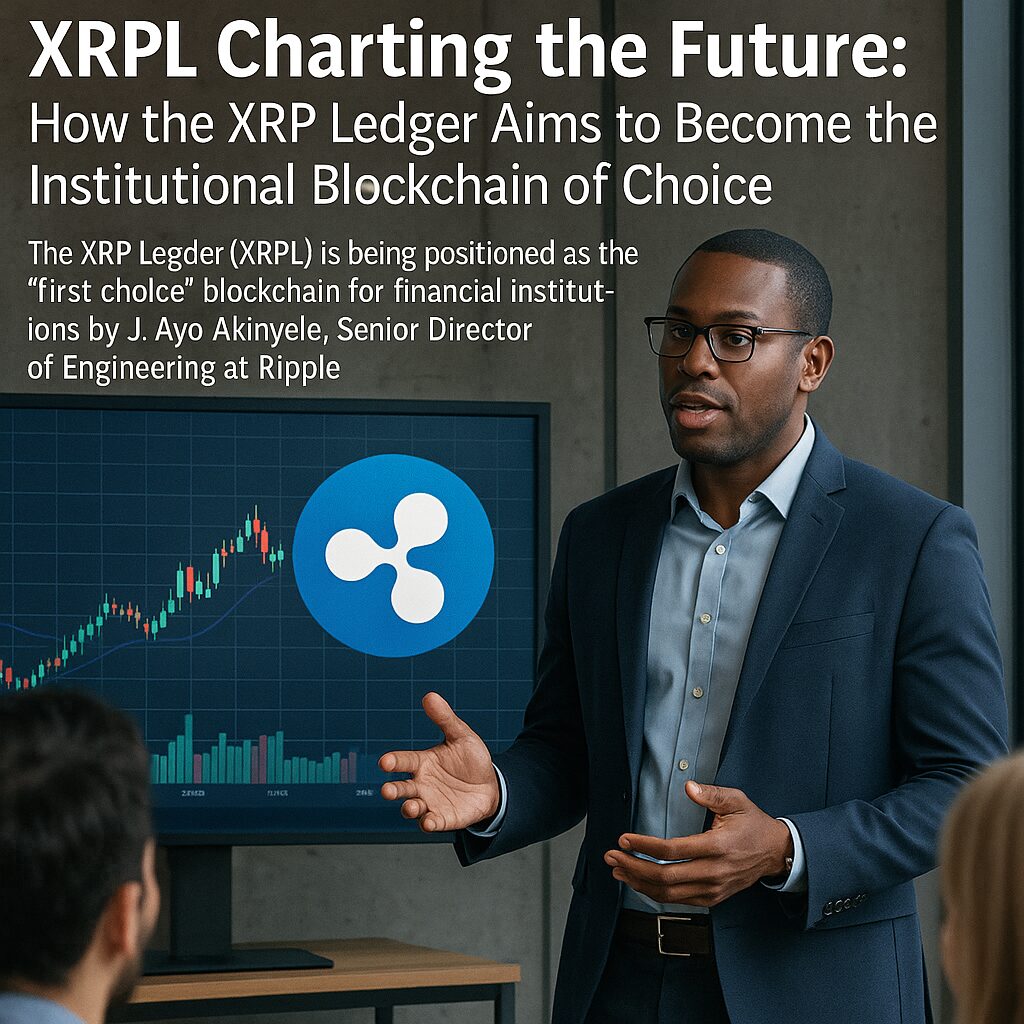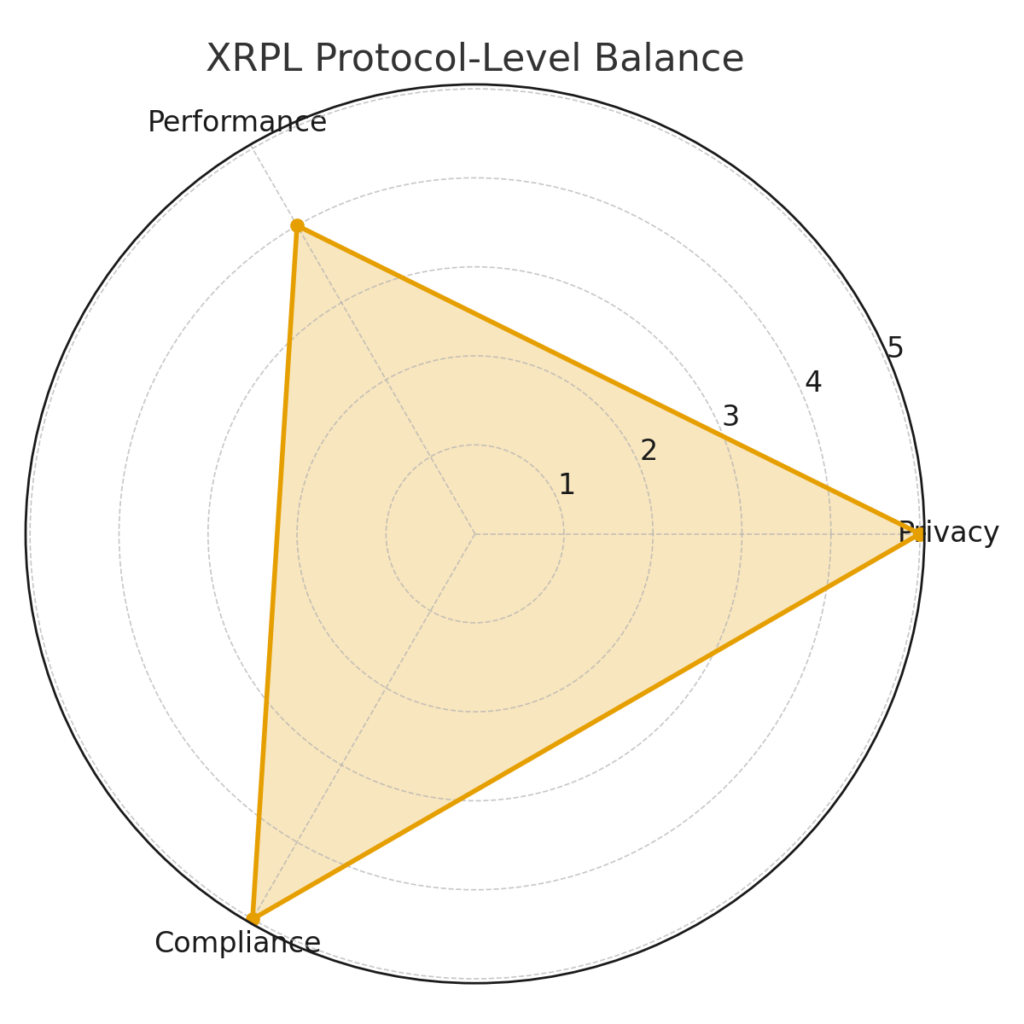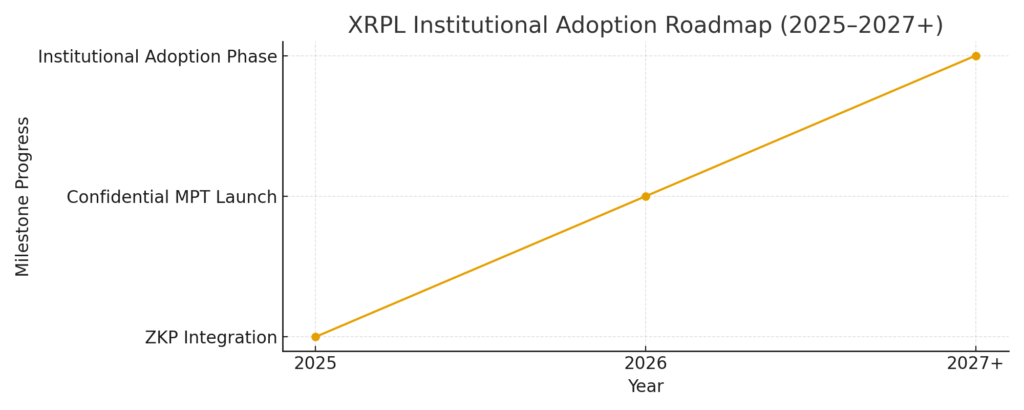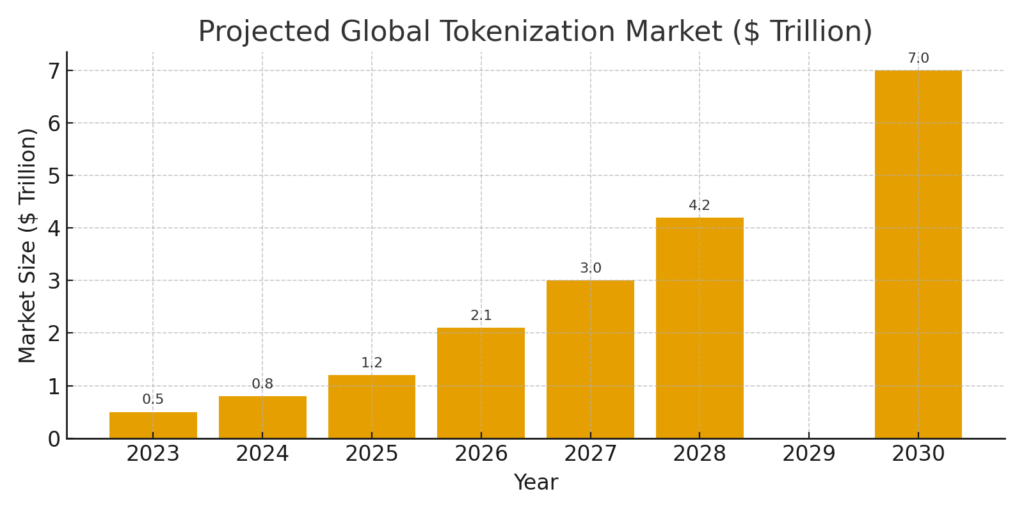
Main Points :
- The XRP Ledger (XRPL) is being positioned as the “first choice” blockchain for financial institutions by J. Ayo Akinyele, Senior Director of Engineering at Ripple.
- Core to this strategy are built-in protocol-level privacy, compliance, and trust structures — not retrofits — using technologies such as zero-knowledge proofs (ZKPs) and confidential Multi-Purpose Tokens (MPTs).
- Akinyele argues that scalability must not compromise trust: XRPL’s roadmap uses trusted execution environments (TEEs) and confidential computation to maintain security and decentralization.
- Two major milestones: in the next 12 months (2025-26) private/compliant transactions via ZKP; in 2026 the introduction of Confidential MPTs enabling tokenization of real-world assets (RWAs) while preserving confidentiality.
- For investors, developers and institutions seeking the next frontier in blockchain, XRPL’s finance-oriented features (DEX, escrow, payment channels) plus this institutional push represent a notable opportunity.
Introduction: The Institutional Imperative for Blockchain That Does Trust and Scale
In a recent blog post, Ripple’s cryptographer and engineering leader J. Ayo Akinyele asserts that the future of blockchain finance is not a question of “if” but “how” institutions move on-chain. He highlights a central paradox: traditional finance demands confidentiality, yet public blockchains are built on transparency. Without reconciling these needs, major financial institutions are unlikely to shift significant workflows to on-chain infrastructures. The XRP Ledger (XRPL), with more than a decade of operation and built-in finance-oriented primitives, is being positioned by Ripple as the infrastructure to bridge that gap.
For readers who seek new crypto assets, revenue opportunities and practical blockchain applications, this development invites deeper attention. XRPL isn’t just another chain; it may be staking a claim to becoming the backbone for tokenised real-world finance, backed by institutional-grade design and compliance capabilities.
Programmable Privacy: From Infrastructure to Differentiation
Privacy as Infrastructure, Not Afterthought
Akinyele argues that privacy on-chain should be akin to HTTPS for online banking: a baseline protection for regulated institutions. He rejects the binary view of “private versus public” blockchains and instead advocates for “programmable privacy” — where honest participants control what, to whom, and under what circumstances disclosure occurs, while still giving regulators the audit-friendly paths they require.
Central to this approach are techniques such as zero-knowledge proofs (ZKPs) — which allow a party to prove a statement is true without revealing the underlying data (for example KYC completion without revealing identity to the whole network). For institutions wary of putting core workflows on a fully transparent ledger, the ability to maintain confidentiality while meeting compliance obligations is a potential game-changer.
Scalability Without Compromising Trust

One of the recurring criticisms of high-performance blockchains is that throughput is often achieved by compromising decentralization or security. Akinyele emphasises that XRPL’s upgrades must preserve trust.
His roadmap mentions two critical tools: trusted execution environments (TEEs) to ensure fair ordering of transactions and prevent front-running, and confidential off-chain computation (such as secure enclaves or MPC outputting verifiable on-chain proofs) to handle heavy or privacy-sensitive logic without bloating the ledger.
For developers and institutions, this means XRPL is designing not simply for “more transactions per second” but for “more transactions per trust preserved”.
Roadmap and Tokenisation: Where XRPL Is Heading

Short-Term (2025–26): Private, Compliant Transactions
Akinyele identifies the next 12 months as a key phase. He states the goal is to make XRPL the institutional default by employing ZKPs to enable private, audit-compliant transactions while improving throughput and protocol efficiency.
This phase may involve wallet upgrades, validator software updates, ZKP libraries, selective disclosure mechanisms and release of tooling for builders. For practical blockchain applications, this means that now may be the time to build proof-of-concepts or prototype workflows leveraging XRPL’s emerging privacy paths.
Mid-Term (2026): Confidential Multi-Purpose Tokens and RWA Tokenisation
Looking ahead to 2026, XRPL plans to introduce Confidential Multi-Purpose Tokens (MPTs) as a protocol standard. These tokens aim to encrypt balances and transfers while retaining auditability, enabling the tokenisation of real-world assets (RWAs) such as securities, real estate, commodities — while preserving confidentiality.
Embedded in the XRPL context is the argument that many trillions of dollars in assets are set to move on-chain over the coming decade, and XRPL claims to be uniquely positioned to serve as the bridge. With more than ten years of operational history, built-in decentralised exchange, escrow, payments channels – the foundation exists.
For crypto investors and asset-builders, this roadmap signals a shift from “crypto tokens and speculation” toward “regulated, institution-grade asset flows on-chain”. XRPL thus becomes not just a token ecosystem but a potential infrastructure layer for regulated finance.
Recent Developments and the Competitive Landscape
Several recent updates support XRPL’s institutional thrust. For instance, on 1 October 2025 the MPTokens V1 amendment reportedly activated on mainnet after validator approval. Ecosystem updates also include preparations for native lending and tokenisation modules, further aligning XRPL with institutional DeFi needs.
Competitive blockchains are likewise advancing: privacy-enabled L2s such as zkSync, Scroll and Linea are vying for institutional adoption; however, XRPL’s argument is its finance-native design and long-standing track record.
Yet risks remain: computational overhead of ZKP systems, regulatory reluctance toward “hidden” assets, coordination of validator upgrades, and competition executing faster could all pose hurdles.
From a developer/investor lens, these developments suggest a strategic window: a chain (XRPL) is positioning for institutional flows, and that could drive ecosystem growth, token launches, and revenue-generating applications in the “regulated tokenisation” segment.
Implications for New Crypto Assets, Builders and Revenue Seekers
For Builders and Developers
XRPL’s evolving feature set (especially MPTs and privacy-compliance modules) offers a strong platform for building institutional-grade dApps: tokenisation, lending, collateral management, confidential workflows. With the roadmap now clear, early builders may gain first-mover advantage.
Given your interest in token-issuance, no-code platforms and EVM/EVM-compatible infrastructure, XRPL’s protocol upgrades may present a parallel or complementary route to Ethereum-centric ecosystems.
For Crypto Investors and Speculators
Privacy-upgrades and institutional positioning often catalyse renewed on-chain activity and ecosystem expansions. XRPL’s clarity about milestones may drive speculative interest — whether in the native token XRP or token-issuers on the ledger. However, as always, token value will depend on real adoption, liquidity and regulatory clarity.
For income-oriented opportunities, watch for new asset-tokenisations, institutional flows, custody partnerships and ecosystem incentives emerging on XRPL’s upgraded stack.
For Institutions and Finance Teams
If you represent or advise financial institutions, XRPL’s roadmap offers a compelling narrative: a public ledger engineered for regulated finance, enabling confidentiality, auditability and tokenised asset flows.
Early engagement through pilots, credentials, proof-of-concepts and validator participation may position institutions well ahead of the curve. Compliance teams will need to understand selective-disclosure models, view-keys, ZKP-based proofs and token-representation of collateral.
Strategic Positioning: XRPL in the Larger Blockchain Ecosystem
XRPL’s hybrid positioning — public chain with permissioned-style privacy and disclosure — is distinct from fully private or fully public chains. If it executes, it may carve out a niche: institutions unwilling to trust fully private or closed networks but requiring confidentiality beyond vanilla public transparency.
Timing matters: the first mover in “privacy + tokenisation + regulated assets” on a credible ledger may capture mind-share, developer interest and institutional commitments. XRPL’s claim to more than a decade of live operation gives it a credibility edge.
However execution risks remain: if latency, cost or regulatory resistance slow rollout, competitors may seize momentum. For participants, the strategy is to watch the actual delivery of MPTs, privacy modules and institutional partnerships, rather than simply the announcements.

Conclusion: Bridging Trust, Innovation and Revenue in Blockchain Finance
The announcement by J. Ayo Akinyele from Ripple is more than a tech roadmap — it signals a paradigm shift. XRPL aspires to become the reliable bridge between trad-finance and on-chain tokenised assets, by embedding privacy, compliance and scale at the protocol level.
For readers seeking new crypto assets, income sources and practical blockchain applications, XRPL’s upgraded vision is highly relevant. Whether you are a builder launching tokenised assets, an investor seeking next-wave ecosystem growth, or an institution exploring blockchain finance, XRPL’s institutional focus invites close attention.
Yet the path is not guaranteed. Delivery matters. Regulatory clarity, network adoption, developer ecosystem growth and institutional commitments will determine whether XRPL truly becomes the “default for institutions”.
In short: XRPL is presenting itself as the infrastructure for the next generation of regulated, tokenised finance — and whether you build, invest or adopt, now may be the time to position yourself accordingly.

